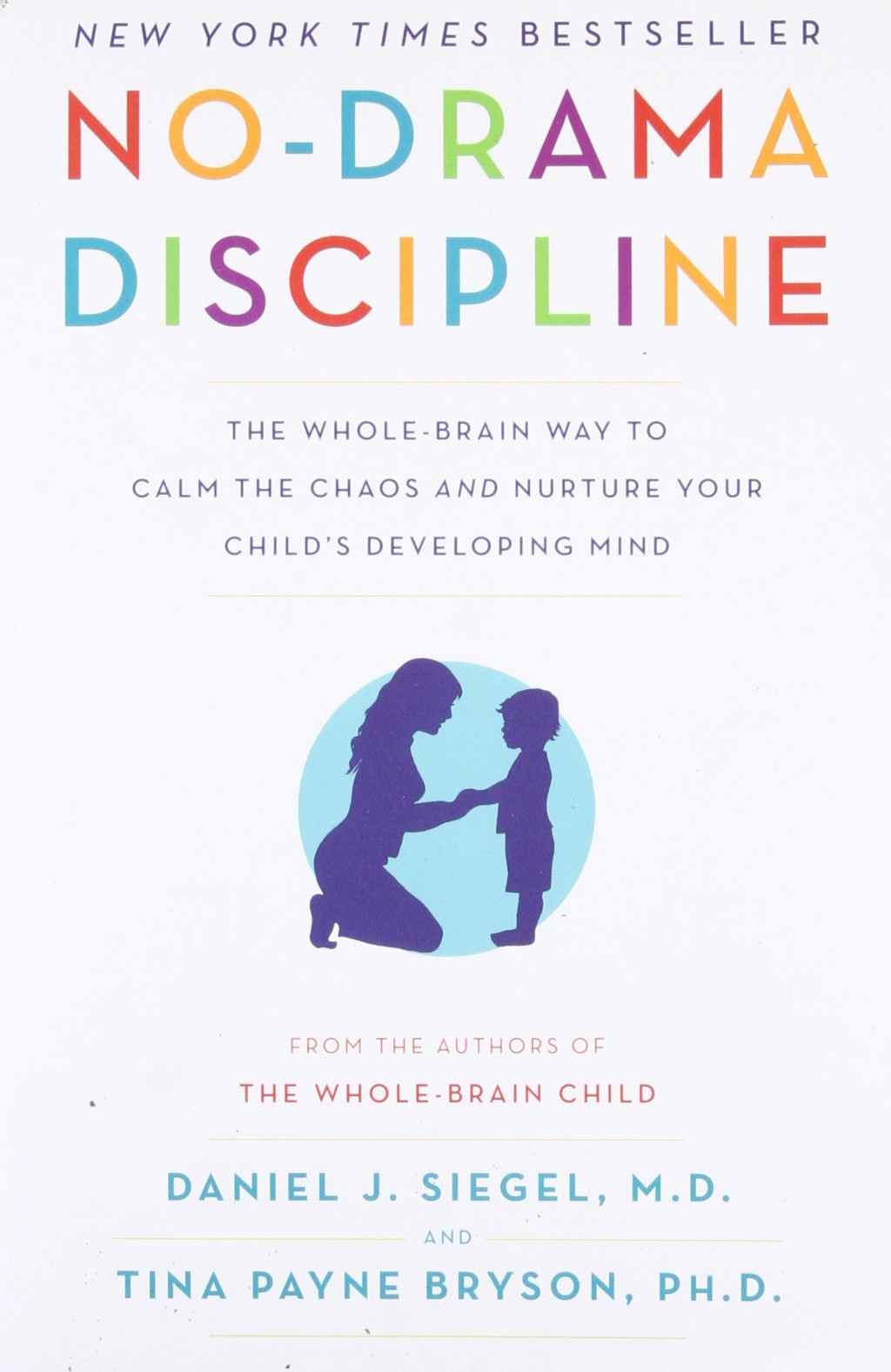We are part of the Amazon Associate program.
 Welcome back to the MPMB Book Club! It’s virtual, so please feel absolutely no pressure to read on our schedule. Feel free to simply join this “book club” on your own pace to make a little space for yourself and to have some quiet uninterrupted alone-time!
Welcome back to the MPMB Book Club! It’s virtual, so please feel absolutely no pressure to read on our schedule. Feel free to simply join this “book club” on your own pace to make a little space for yourself and to have some quiet uninterrupted alone-time!
This month’s book relates to a topic important to us all — discipline. We read “No Drama Discipline” by Daniel Siegel and Tina Payne Bryson.
We have two toddlers, and I have no doubt you all can understand the struggles we often encounter. Disciplining our children is hard. We’ve tried various techniques: take toys away, put them in time-out, employ sticker charts, and maybe resort to bribery. Sometimes my husband and I have differing approaches, and we often react quickly instead of with calm intention.
Of course, there’s no one answer for all situations, children, and families. But it does seem important to have a consistent and unified approach. Kids thrive with routine and predictability, including our discipline approach. As the authors explain: “Predictable, sensitive, loving, relational discipline allows kids to feel safe.”
I was also drawn to this book as I’ve also been trying to be more mindful practicing the yoga of motherhood, and have naturally been asking myself if there’s a way to handle my toddler’s “moments” more yogic-ally. Is it possible to teach and discipline them with my best self, to help them grow into their best selves?
 So here we go, an inspired list of 10 ideas from the book to help deal with hard moments of parenthood in a more present and connective way:
So here we go, an inspired list of 10 ideas from the book to help deal with hard moments of parenthood in a more present and connective way:
- Remember that tantrums are the moments when our kids need us the most. These moments where discipline is needed is an opportunity. It’s a time to show them love and respect. It’s a time to communicate: “I’m with you. I’ve got your back. Even when you’re at your worst, and I don’t like the way you’re acting, I love you, and I’m here for you. I understand you’re having a hard time, and I am here.”
- Try to identify the underlying trigger. Are they hungry, angry, lonely, or tired? Often that may point to the underlying cause of the meltdown.
- Stop and ask Why? What? How? Why did he act this way? What lesson do I want to teach? (such as sharing, empathy, self-control, flexibility, delay gratification) How can I best teach this lesson?
- Avoid time-outs. Time-outs teach rejection over connection. “Forcing her to go off and sit by herself can feel like abandonment to a child… You don’t want to send the message that you’ll be in a relationship with her when she’s “good” or happy, but you’ll withhold your love and affection when she’s not.”
- Try a “time-in.” Go with your child to “time-in” and talk about what could have been done differently.
- Find a way to turn your “No” into a “Yes.” Instead of saying no to what your toddler wants, try to find a way to say a conditional yes. “Yes, you can have fruit after dinner. Yes we can read one more story tomorrow.”
- Emphasize the positive. Instead of saying “stop whining” say “I like when you talk in your big kid voice.”
- Find the opportunity to teach empathy. Can you show him how his behavior makes you feel sad?
- Find a way to make him laugh. Sing a song, play hide and seek, make a funny sound, pretend to be a monkey.
- Go outside. Sometimes kids just need to run around outside.
Have you tried any of these? What worked? What didn’t?
The book even writes out some key principles on a “refrigerator sheet” to hang up. We tried it!
Next month’s book is The Conscious Parent by Shefali Tsabery, and our review will be posted on December 18th!
Hope you can join us!















